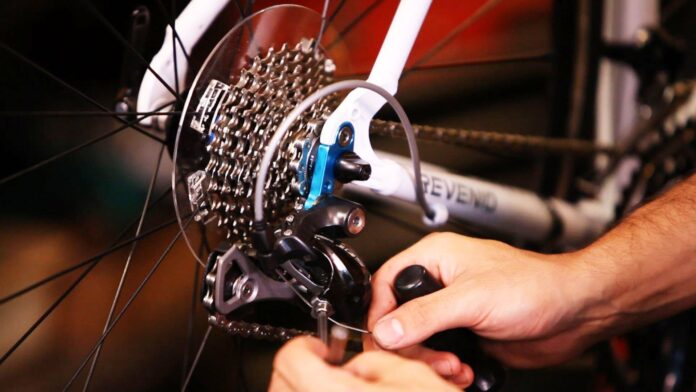Introduction
Welcome to our comprehensive guide on how to repair electric bikes by yourself! Electric bikes, also known as e-bikes, have gained immense popularity over the years due to their eco-friendly nature and ability to make commuting easier. However, just like any other machinery, e-bikes can encounter issues and require repairs from time to time. Knowing how to tackle these repairs on your own can save you time and money.
In this article, we’ll walk you through the step-by-step process of repairing electric bikes, covering everything from common troubleshooting to advanced repairs. Whether you’re an experienced DIY enthusiast or a novice looking to learn more, this guide will equip you with the necessary knowledge and skills to fix your electric bike confidently.
How to Repair Electric Bike by Yourself?
Understanding Electric Bike Components
Before diving into the repairs, let’s understand the key components of an electric bike. Familiarizing yourself with these parts will help you diagnose issues more effectively:
1. Battery Pack – The power source of the electric bike.
2. Electric Motor – The motor that provides assistance to pedaling.
3. Controller – Manages the flow of electric power to the motor.
4. Pedal Sensor – Detects when you pedal and signals the motor to assist.
5. Throttle – Offers an alternative way to control the motor’s power.
6. Display Panel – Shows important information like speed, battery level, etc.
7. Brakes – Enable you to stop the bike safely.
8. Wiring and Connectors – The electrical connections that link various components.
Basic Troubleshooting
Before undertaking any major repairs, let’s troubleshoot some common issues you might encounter with your electric bike:
1. E-Bike Not Powering On: Check the battery charge and connections. Replace or recharge the battery if needed.
2. Motor Not Assisting: Inspect the pedal sensor and throttle. Clean or replace if they’re faulty.
3. Brake Issues: Ensure the brake pads are not worn out and the brake cables are properly adjusted.
4. Strange Noises: Listen for unusual sounds and inspect the chain, motor, and gears for any obstructions or damages.
Essential Tools for E-Bike Repair
Having the right tools is crucial for successful electric bike repairs. Here’s a list of essential tools you should have in your repair kit:
1. Screwdrivers and Allen Keys – For tightening screws and bolts.
2. Tire Levers and Patch Kit – To fix flat tires.
3. Chain Breaker – For repairing or replacing bike chains.
4. Multimeter – To check electrical components for faults.
5. Wrench Set – For adjusting various parts of the bike.
6. Lubricants and Cleaning Materials – To maintain the bike in top condition.
Battery Related Repairs
The battery is the heart of an electric bike. Here’s how you can handle some common battery-related issues:
1. Extending Battery Life: Implement practices to maximize battery life, such as proper charging and storage.
2. Battery Not Charging: Check the charger, power outlet, and connections. Replace the charger if necessary.
3. Battery Replacement: Learn when it’s time to replace the battery and how to do it.
Motor and Controller Repairs
The motor and controller are integral to the performance of your e-bike. Here’s what you should know about repairing them:
1. Motor Overheating: Identify the causes of motor overheating and how to prevent it.
2. Motor Replacement: Learn how to replace a faulty motor effectively.
3. Controller Malfunctions: Troubleshoot and repair common controller issues.
E-Bike Brake Repairs
The brakes are essential for safety. Here’s how to address common brake-related problems:
1. Adjusting Brake Pads: Learn how to adjust the brake pads for optimal performance.
2. Brake Cable Replacement: Step-by-step guide on replacing brake cables.
Tire and Wheel Repairs
Flat tires and damaged wheels can hinder your ride. Here’s how to handle these repairs:
1. Fixing Flat Tires: Patch up punctured tires and get back on the road.
2. Wheel Truing: Learn how to true your bike wheels to avoid wobbling.
Advanced Repairs and Maintenance
For more experienced DIYers, here are some advanced repairs and maintenance tasks:
1. Chain and Gear Replacement: Replace worn-out chains and gears to maintain smooth pedaling.
2. Upgrading Components: Tips on upgrading your bike components for better performance.
3. Diagnosing Electrical Issues: Use a multimeter to diagnose complex electrical problems.
Safety Tips for DIY E-Bike Repair
When attempting repairs on your own, safety should be your top priority. Here are some safety tips to follow:
1. Wear Protective Gear: Always wear a helmet, gloves, and other safety gear.
2. Disconnect the Battery: Before starting any electrical repairs, disconnect the battery.
3. Follow Manufacturer’s Manuals: Refer to the bike’s manual for specific repair instructions.
Also visit ebikevibe.com to have all the essential knowledge of ebike repairs and reviews.
FAQs
1. Can I repair my electric bike even if I have no experience with bike repairs?
Absolutely! This guide is designed for both beginners and experienced DIY enthusiasts, providing clear and detailed instructions to help you repair your e-bike with confidence.
2. Is it safe to replace the battery myself?
If you follow proper safety procedures and take necessary precautions, replacing the battery can be done safely. However, if you’re unsure, it’s best to seek assistance from a professional.
3. How long does it take to learn basic e-bike repairs?
Learning the basics of e-bike repair can take a few days to a few weeks, depending on your dedication and time invested in practicing.
4. Can I upgrade my e-bike motor for more power?
Yes, you can upgrade the motor to enhance your bike’s performance. However, be sure to choose a compatible motor and seek professional help if needed.
5. What should I do if my e-bike stops suddenly during a ride?
Check the battery charge, connections, and wiring. If you can’t identify the issue, consider taking your e-bike to a professional for inspection.
6. How often should I perform maintenance on my e-bike?
Regular maintenance is crucial for optimal performance. Consider performing basic maintenance tasks every few months and more detailed inspections annually.
Conclusion
Repairing your electric bike by yourself is a rewarding experience that not only saves money but also empowers you with essential bike repair skills. This comprehensive guide has equipped you with the knowledge to tackle common e-bike issues and even perform advanced repairs with confidence.
Remember to prioritize safety, follow instructions carefully, and invest in quality tools. With determination and practice, you’ll become a proficient e-bike repairer in no time. Happy repairing!
If you live in Canada and want to have the best mechanic then our suggestion is to visit Quantumebikes Montreal.


